PURPOSE This study aimed to identify ACTN3 gene polymorphisms amongprofessional ssireum players by weight class and between elite and non-elite players,and to select genotype that matches the characteristics of the sport. METHODS The subjects of this study were 148 male athletes currently working as professionalssireum players. Chi-square test cross-tabulation analysis was conducted to examinethe differences in ACTN3 genotypes between weight classes and between elite andnon-elite players. RESULTS There were no significant differences in allele or genotypebetween ssireum players, but there were significant differences in R-allele and XXgenotype. CONCLUSIONS Players with the R-allele type of the ACTN3 gene weremore often classified as elite. Using this marker as a basis for organizing a playerselection and training programs would be more effective in training those that matchthe characteristics of elite players of the game.
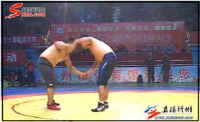
This research begins from the awareness that even though there are different forms of wrestlings in the ethnic minority groups in China, the study on their morphological aspects has reached the limit. Based on the documents and VOD data about these wrestlings of each ethnic group, their morphological characteristics can be verified as follows. First, The postures of Han and Mongolian people take the way of two players standing and playing, and Korean-Chinese people and Hui people take a saddle stance using a thigh band. Second, as for the arenas for the wrestlings, owing to some geographical features and natural environments, they were set up at a specific area during the traditional era using natural objects(grass, lawn, soil, sand). Yet, in the modern times, they have been changed as being installed and run in modernized gyms, sports fields, or parts following the standard of stadium facilities supervised by each organization. Third, with regard to the play wear of wrestling, some parts of the traditional costumes have been transmitted and worn. However, in case of most of the traditional costumes, it has been found out that modernized clothes which take the forms of garments developed since the modern era into consideration are being used. Fourth, in terms of the game equipments of wrestling, certain clothes(uniform, vest), running shoes and a band(a thigh band) should be worn.


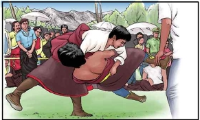
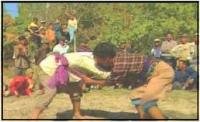
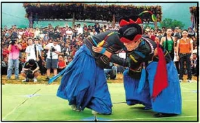
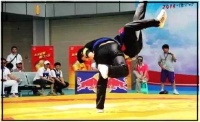

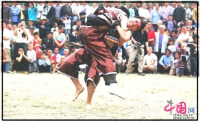
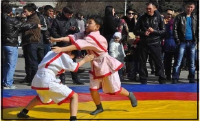
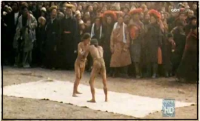
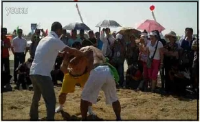
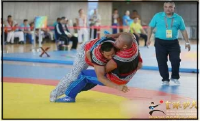
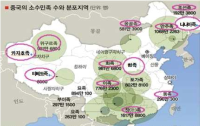















This study examined whether or not regulatory focus can predict motivation level. 141 Ssireum player completed Korean self-regulatory focus of Hong(2005)assessing their self-regulatory focus, and Behavioral Regulation in Sport Questionnaire(BRSQ) of Lonsdale, Hodge & Rose(2008) accessing motivation level based on self-determination theory. Artificial neural network analysis was utilized to find motivation factors that determine the regulatory focus, and the option was multi-layer perception. The result represented promotion focus predicted intrinsic motivation. Also, the prevention focus predicted extrinsic motivation. This result provided that self-regulatory focus can predict player’s motivation level and promotion focus related to intrinsic motivation.


PURPOSE This study investigated weight-class-related strength parameters during pulling performance in the ssireum. METHODS Elite ssireum athletes participated, 24 divided into four weight classes of six athletes each. They performed a pulling task while gripping a tube fixed to a three-axes load cell sensor, standing on force plate platforms. The test involved 30 repetitions at maximal force with the legs bent, the ssireum’s typical posture. Maximal force (Fmax), time to maximal force (TFmax), time difference between maximal forces (TDmax), and horizontal and vertical angles at maximal force (HAmax and VAmax, respectively) were analyzed from the load cell sensors. Ground reaction force (GRF) was collected, including peak force along the three axes, the resultant force, and the center of pressure (COP). One-way ANOVA tests were conducted to compare among weight classes (α=.05). RESULTS Fmax measured by load cell showed significant difference between classes (p<.05), indicating that the second weight group (Geumgang class) generated more pulling force than the heavier classes. In GRF results, lightweight classes demonstrated larger COP difference between the left and right plates. Specifically, the Geumgang class showed more movement in the anterior-posterior (AP) direction on the left plate. The peak GRF in the right plate of the AP (p<.001) and ML (p<.05) directions showed significant differences between lighter and heavier weight classes. CONCLUSIONS The Geumgang class generated greater pulling force, and the lighter classes demonstrated more leg contribution. Force generation did not solely depend on body mass; instead, lighter athletes often relied on the lower limbs to compensate for their limitations, a strategy commonly observed in competitions.